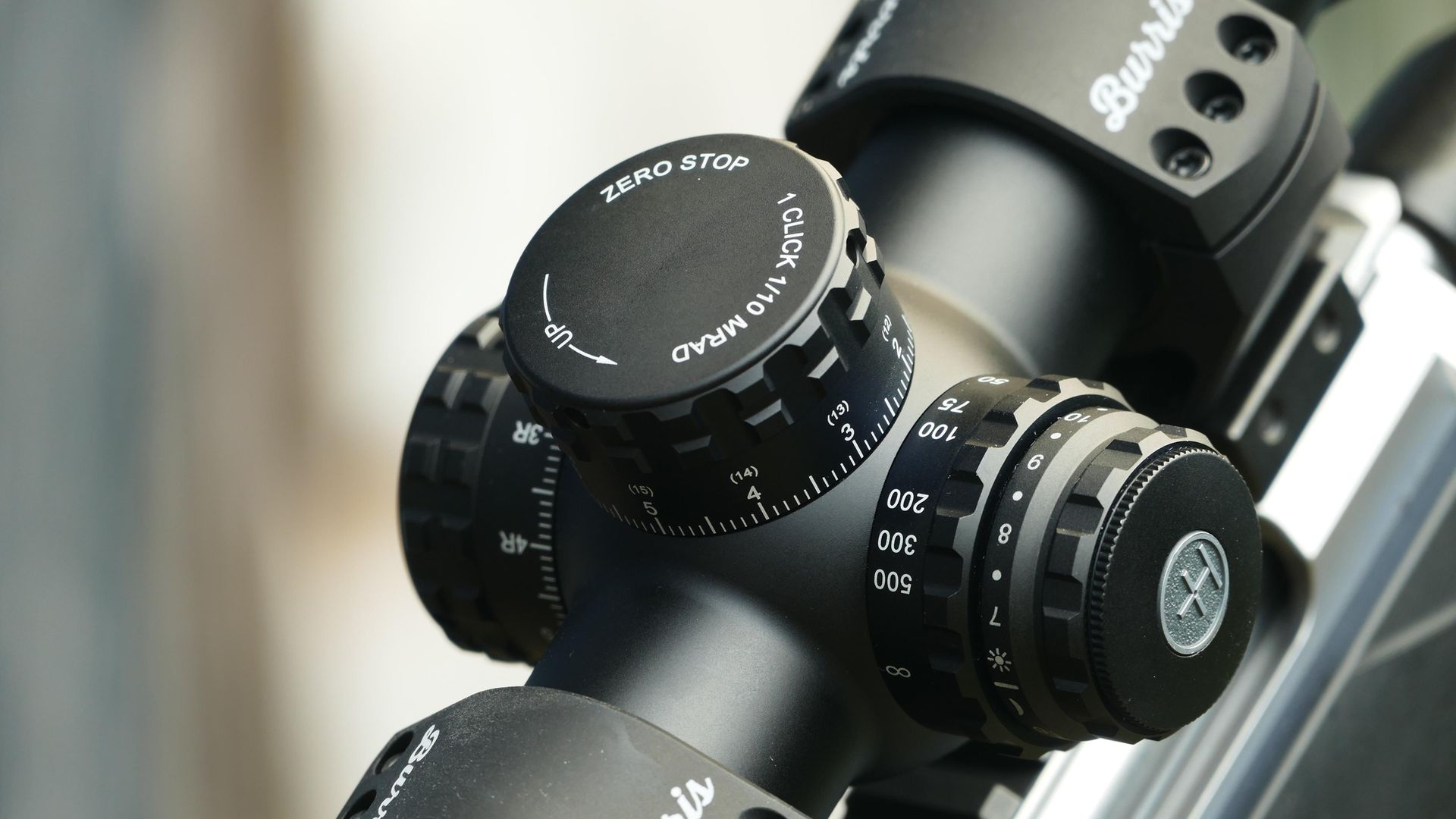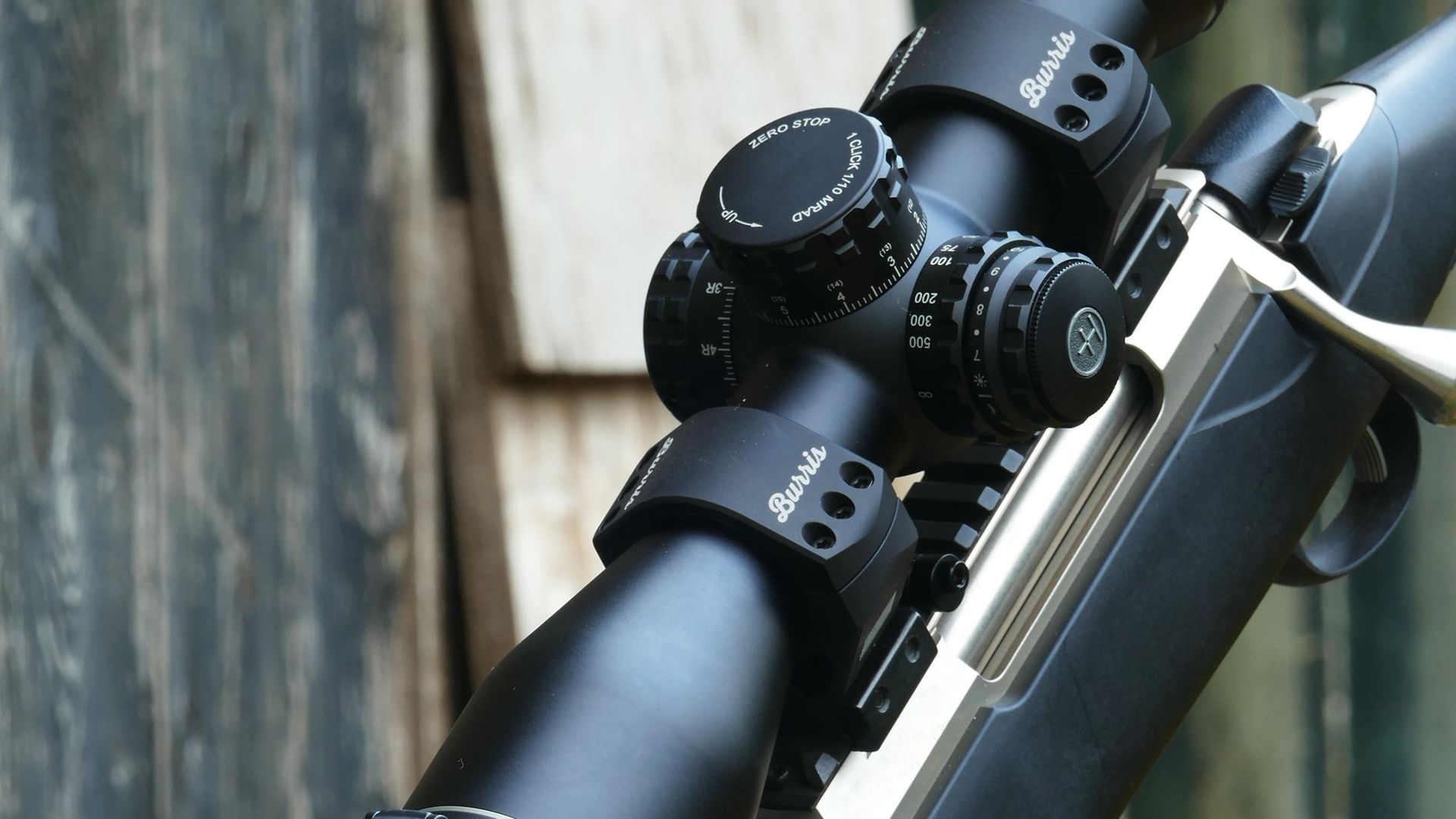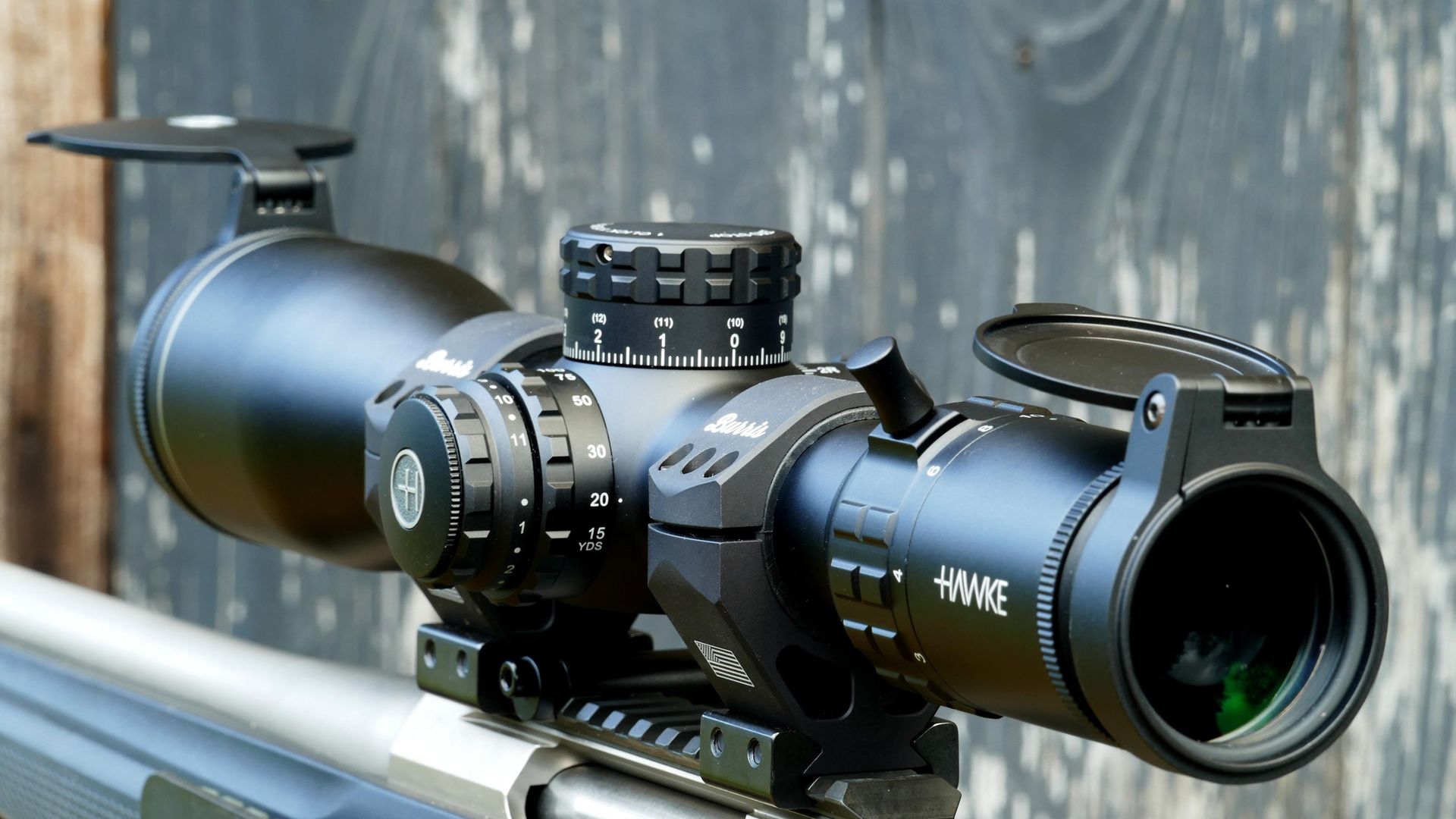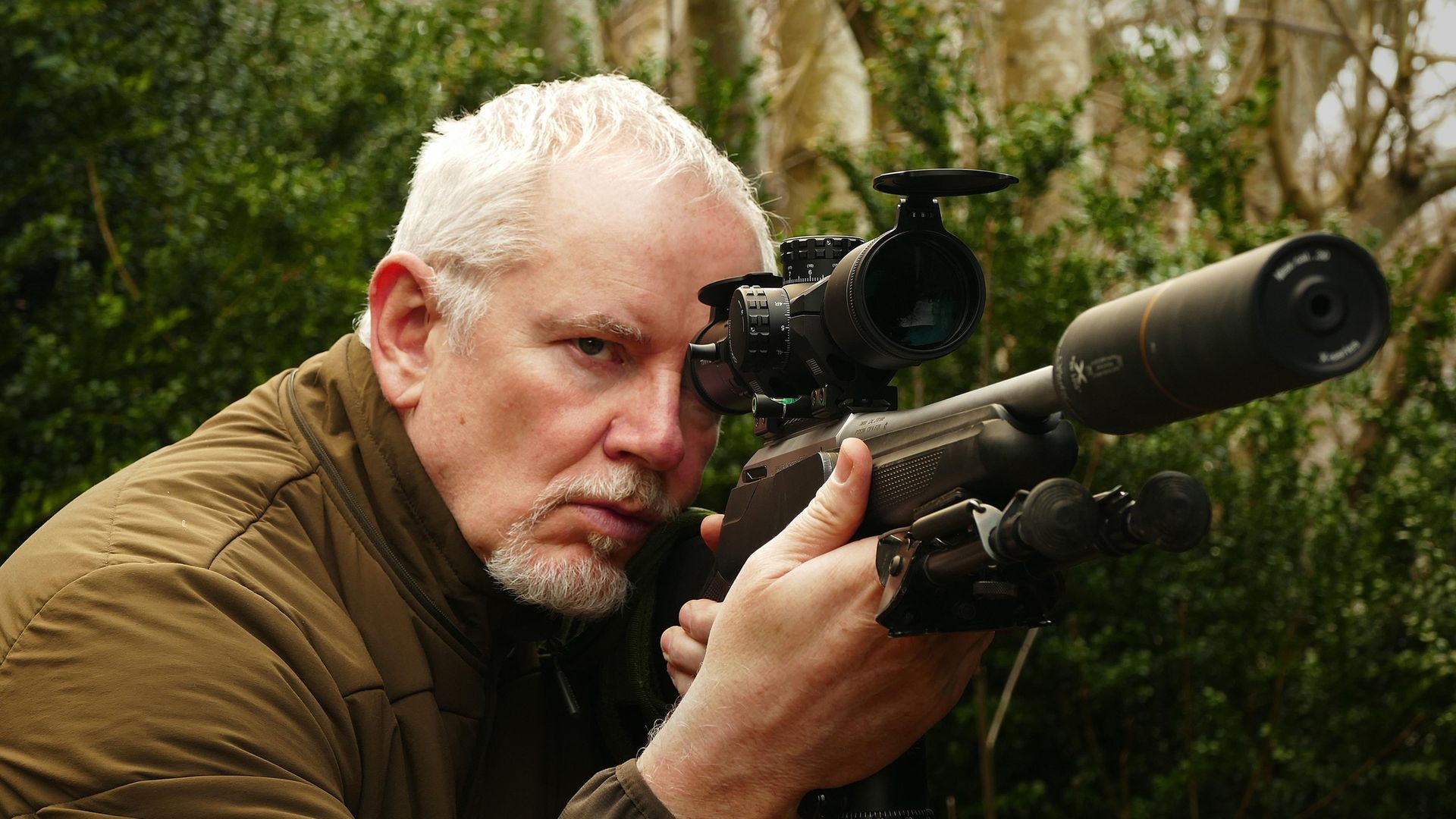Paul Austin is all eyes as Hawke goes big with its new 34mm tubed incarnation of the Frontier FFP; find out what he thinks of its performance in this test & review
The original Hawke Frontiers were a bit of a revelation. Journos and serious shooters alike all agreed that the Frontier was, and indeed still is, a very serious player in the sub-£1,000 price bracket. But prior to the release of the Frontier line, Hawke suffered a little from its own success in the air rifle market. The perception was that Hawk lacked the panache and quality of the German brands. That all changed with the original Frontier and now they’re building on that success with the release of the latest ‘must have’ in trendy scope design – a 34mm tube.
 credit: Archant
credit: Archant
Hawke Frontier FFP 3-18x50: Elevation
Out of the box the new Frontier delivered 183 clicks of elevation – or 193 if you include the 1mrad of overtravel programmed into the zero stop at the factory. What does this equate to? Well assuming the ‘out of the box zero’ was indeed an actual zero, this would mean a maximum range (based on a Strelok Pro calculation) of 445m on my Lithgow Crossover in .22 LR, which is frankly a ridiculous amount of reach on a 22 LR shooting subs based on a 50m zero.
It’s important to state that this is off a flat rail. To get anywhere near this kind of distance with a .22 LR, the vast majority of scopes would require a 20MOA rail. Hawke have basically doubled the number of available clicks form the previous 30mm Frontier.
The Frontier 4-20x50 (30mm tube) is one of my favourite hunting optics and offers 23mrad; the new 34mm Frontier weighs in with a whooping 46mrad. The 5-30x model still has 29mrad, which again is a substantial improvement over the 19mrad of its 5-25x 30mm tubed predecessor.
This extended dialling range is the primary benefit a 34mm tube delivers. The extra space in the tube itself provides a lot more movement of the erector tube within, with the end result being a massive jump in the number of available clicks.
 credit: Archant
credit: Archant
Hawke Frontier FFP 3-18x50: Full features overview
As you’d expect from any high spec modern scope, zero-stop comes as part of the package – and it’s not just the simple one-rotation type seen on cheaper optics. Set your zero, remove the push-pull caps and adjust the zero-stop ring within the turret. Instant back to zero every time. It might not seem like a big deal, but once you’ve used zero-stop you’ll never want to go back. You just crank the turret back to zero without having to count clicks or fumble about before the next shot. If you don’t use the feature, the zero-stop collar can be removed and the scope will then dial freely.
Starting from the ocular end we, see the now familiar fast-focus collar, which allows you to lock the reticle focus permanently into position. Both ends of the optic have aluminium screw-in scope covers; they are beautifully machined and impossible to lose. The hinge design is quite pronounced but thankfully the covers can still be rotated once in place to accommodate a scope that’s sitting close to the bore or to avoid obscuring torches.
Moving to the turrets, we arrive at another USP of the latest Frontier. Like its predecessor, the scope has push-pull locking turrets for both windage and elevation, excellent and predictable clicks and silky-smooth parallax adjustment that has a nicely weighted feel. Windage is marked for left and right but there’s no elevation indicator on the top turret, so make sure you use zero-stop between shots to avoid any dialling errors.
The side parallax has been redesigned and now provides 11 levels of illumination with off/on positions between each, so it’s easy to flick to your favourite power setting. Crucially there’s more choice at the low power end, which definitely helps at last light or when lamping.
The full illuminated ret is a bit daunting at first, but once you get used to it it’s actually very well implemented, with the slightly bloated Christmas tree layout making it easy to work out windage and holdover with its combination of numbers and dotted aim points.
The reticle is fully lit. Personally I’d prefer centre dot only, but for a combined hunter/dialler the more complex ret does make sense. As an overall package the 34mm Frontier is superb. The quality of the build and the finishing touches like zero-stop and multilevel illumination, push-pull turrets and the accompanying (and removable) mag lever make it real pleasure to use.
As for the glass, I had no complaints whatsoever, with the new optic following firmly in the footsteps of its smaller tubed siblings. There was no chromatic aberration that I could see, the image was sharp from edge to edge, and there was great low-light performance and excellent contrast throughout the mag range, something that is often overlooked but is a tell-tale sign of really good glass.
 credit: Archant
credit: Archant
Hawke Frontier FFP 3-18x50: Why first focal plane?
It’s an FFP scope, which would always be my first choice, and Hawke has done a good job balancing the ret. It’s fine at base mag but still very shootable, especially when aided by the improved illumination, but not too chunky at high mag.
For me the question isn’t “Why should you go for FFP?” It’s “Why wouldn’t you?” The benefits easily outweigh any downsides. FFP scopes come into their own at long range or when shooting slightly curvier calibres such as rimfire or slower centrefire, where holdover or dialling is a more common occurrence.
With an FFP scope you’re free to zoom to any mag, confident that your holdover never changes, it’s just one less thing to think about and allows you to use the entire mag range without applying any calculations to figure out the relationship between the current mag power and holdover, or the clicks required to make the shot.
 credit: Archant
credit: Archant
Hawke Frontier FFP 3-18x50: Hunting or long-range?
At first I was slightly puzzled by the 3-18x mag range on the 34mm Frontier, but the more I use it the more it makes sense. Personally I do not like having a high base magnification on a hunting scope, preferring more field of view to locate the prey before zooming in for the kill. With this scope you get the best of both worlds – an optic that’s perfectly at home in the field but also capable of dialling out to extreme range if you fancy ringing some steel at extended range. All in all, it’s a highly recommended piece of kit.
Tech specs
Length: 337mm
Weight: 790g
Focus/Parallax: Side Focus 14m
Field of View: 12.5 - 2.1m @100m
Exit Pupil: 16.7-2.8mm
Chassis: 34mm Mono-tube
Mag range: 3-18x
Objective: 50mm
Illumination: Red (11 Levels with Off Positions In-between)
Reticle: Mil Pro Ext
Elevation Increment: 1⁄10 MRAD
Elevation Adjustment Range: 46 MRAD
Windage Increment: 1⁄10 MRAD
Windage Adjustment Range: 25 MRAD
Ocular Locking Fast Focus
Lens Coating: Fully Multi-Coated - 21 Layers
Removable Zoom Lever
Focal Plane First Focal Plane (FFP)
Turret Type Exposed Zero Lock ‘n’ Stop Turrets
Product: Frontier 34 FFP 3-18x50 Mil Pro Ext Reticle
Supplier: Hawk optics
Price: £949